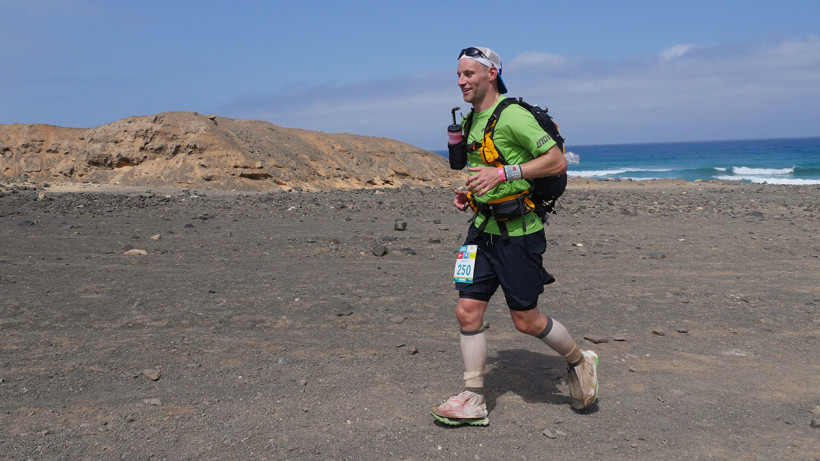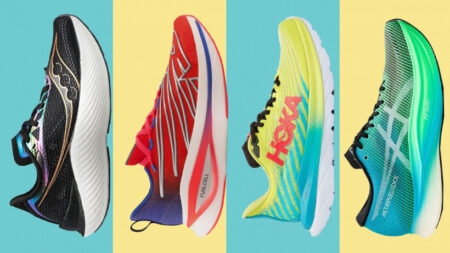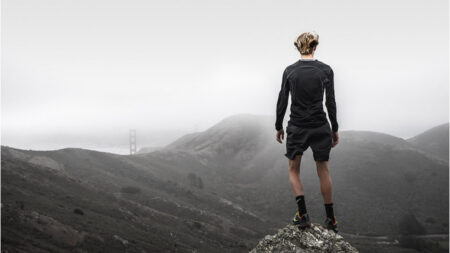Everything you need to pack before hitting the trails, sand, mountains or rocks
One of the beautiful things about running is that in its purest form, it doesn’t require much kit. That all changes, however, once you step into the world of ultramarathons.
In the world of ultra you face new challenges – like how to carry water and food and where to stash the essential kit you need to see you through the challenge of going long.
Seasoned ultra runners will have their kit requirements nailed, but if you’re new to the sport, it can be daunting – not to mention expensive – working out what you need to pack. So aside from a really big smile, seasoned ultra runner, Kieran Alger, takes us through what you should consider when you’re putting together your starter ultra kit.
Size up the challenge first
Before you rush out and splash the cash on new kit, it’s wise to assess the size of the ultra challenge ahead. What you need will depend a lot on how long you’re likely to be out on the course, whether the race has an obligatory kit list, if you’re likely to face extremes of weather, hot or cold, and how well supported the event is with aid stations… Once you start to cover off these things you’ll be in a much better position to plan your kit.
However, there are some staples you’re likely to need whatever the challenge, and we’ve tried to cover the basics here.
A backpack or ultra vest that also provides hydration
Think of this as your portable picnic hamper, and the place where you’ll keep your warm layers, head torch, spare socks and all the essentials you’ll need to carry you between the aid stations on an ultra run.
There’s a huge range of options to choose from, including heavy duty running backpacks that offer more capacity for multi-stage events right down to minimal running vests that provide comfort and freedom, just with less room.
Beyond capacity and how comfortably it fits, the main considerations when choosing your pack include:
- Does it take a hydration bladder, soft flask bottles, hard plastic bottles or a combination?
- How many pockets does it have for separating gear into easy-to-find compartments?
- Is it waterproof?
- Does it come with a built in whistle (often a mandatory item)?
And don’t overlook how easy it to reach stuff you’ll need on the move – we’re mainly talking food here. There’s nothing like being eight hours into an ultra to unleash your inner lazy, and if that energy bar you need to refuel isn’t right where you can grab it, there’s a damn good chance you won’t bother.
We’ve done some legwork for you to find the best running backpacks and the best hydration packs but good brands to research include Salomon, inov-8, OMM, Nathan, Raidlight and Ultimate Direction.
- See the full list: Running backpacks tried and tested
Running shoes
Again, the type of shoes you go for will depend a lot on the race that you’re tackling. Not all ultras are on terrain that means you need to lace up a trail shoe. It’s worth speaking to people who’ve finished the race to see if you need a heavy lugged shoe or you can get away with a road shoe.
However, there are some crucial considerations regardless of whether you’re running a road 100km or a mountain trail ultra.
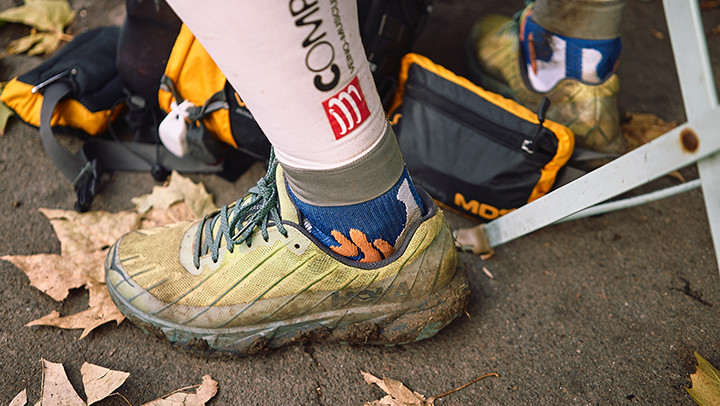
Comfort is essential: Your feet are going to be in your footwear for a long time so comfort is crucial. Shoot for shoes with a wide toe box so your pinkies have plenty of room and make sure there’s no pinching across the top of the foot. Even minor levels of tightness here can be exacerbated after 10 hours on the move. Think about going half a size up to accommodate any swelling that might happen over the course of your travails.
Easy access: Also consider how easy it is to loosen and get your shoes on and off. If you need to change your socks or tend to any blisters you’re more likely do it if you know the the process isn’t going to be a major hassle every time. Complicated lacing set-ups are the enemy here.
Think about cushioning: While it’s not necessarily the case that longer miles require spongier soles, you may well find that you want something that’s more forgiving than your usual short-run shoe. Some brands such as Hoka One One offer oversized maximal cushioning with innovative tech rocker plates in the sole of the shoe that help gently propel you and improve efficiency – on long distances every little helps.
Get a grip: Another key thing to look for is grip. The kind of outsole stickiness you go for will be dictated by the terrain. Is it mud, rocky trails or even loose scree? You can get everything from big lugged options like the inov-8 Terra Ultra G 260 that’ll stick you to the trails like a limpet, right down to a less aggressive trail shoe like the HOKA One One Torrent that’s as good on the stoney trail flats as it is a tree-rutted descent.
- The main contenders: Top trail shoes for run adventures
Socks
Next to your shoes – and aside from the stuff that stops you being naked of course – these are probably the second most important piece of your kit. It’s a fact that people move faster on healthy feet and so you want to protect these as much as possible.
Finding socks you can trust, and that won’t give you blisters, is a 100% essential. You can carry a blister for a few miles during a marathon but if one pops up when you’ve got another eight hours of running to go, it’s going to get difficult. There’s nowhere to hide from lacerated feet.
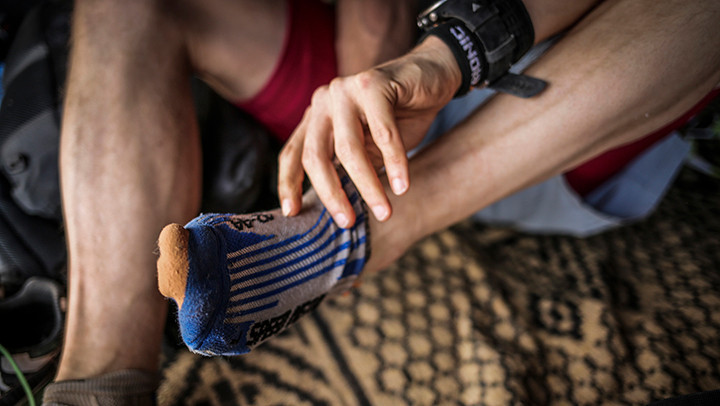
Technical socks such as X-Bionics X Socks are great, while some people opt for Injinji toe socks that offer glove-like separation for each individual toe to keep the little piggies from rubbing each other up the wrong way.
And when you find a pair that work for you we’d recommend buying as many pairs as you can.
- Check out our recommended pairs: The best socks for runners
Base layer
During an ultra you’re likely to run through all manner of temperatures in a single race. From cold mornings to blistering hot midday sun, frosty nights and rain, you can expect the weather to throw the lot at you – particularly if you’re attempting a mountain ultra.
Through all of this you want to keep your core temperature as controlled as possible. Too hot and your heart has to work harder, too cold and you can feel psychologically battered. A good base layer should help you maintain core temperature in the Goldilocks state.
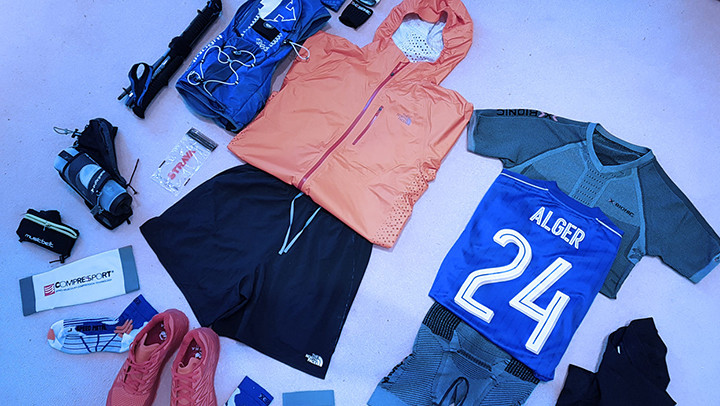
Look for layers with good sweat-wicking and anti-chafe that’ll be kind to those nipple ands sensitive bits. Also think about whether you need long or short sleeves and have a good plan for layering up and down quickly when the weather changes.
One of the big decisions here is whether you go for more technical man-made materials versus natural options like merino wool. Merino wool is an excellent natural insulator and sweat wicker; it’s also good for the environment, feels nice close to the skin and doesn’t hold odour as much as some synthetics. Synthetics can be faster drying, lighter and more hardwearing, however.
It’s also worth looking for Polygiene-infused materials as the anti-microbial addition can help to reduce the somewhat inevitable stink.
- See the full list: The best base layers
Waterproof outer layers
It’s often a piece of mandatory ultra kit and just plain common sense to pack one of these in your kit. Being out all day and sometimes through the night means you’re more likely to hit changeable weather.
Waterproof-ness is rated from 0-10,000mm and the higher the number, the more water it’ll keep out, from light rain to heavy downpours. The real trick here is to find something that offers reliable waterproofing but isn’t like running in a bin bag.
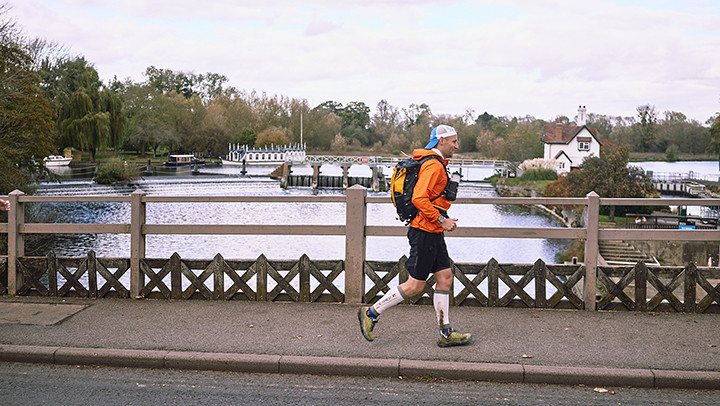
It also has to provide some warmth but be light and packable enough to fit in your backpack. Look for names like GoreTex, NeoShell, eVent and Sympatext options that also come with taped or sealed seams.
Finally, don’t underestimate the little details, like hoods with drawstring face closures so you can see where you’re going, pockets for stashing stuff you need close by and hand and thumb loops for added protection for your hands.
Medical kit
On well-supported ultras a medical kit might not be essential, but having a few emergency items in your pack so you can run repairs when and where you might need them is a good plan. A few plasters, blister plasters, painkillers and antiseptic wipes don’t add much weight but you’ll be thankful for them if you can stop a hot spot or a blister from spiralling out of control.
A good option is the Adventure medical kit which has everything you need in it as well as a waterproof case to keep it protected.
Lube and anti chafe
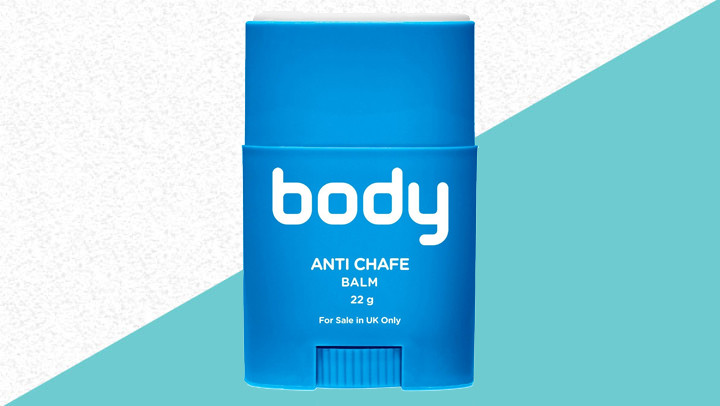
After blisters, there’s little worse than chafed skin to make an ultra run a misery fest. And this include thighs, nipples, and other tender areas where nappy rash rubbing hour after hour takes a mental toll. This one’s a no brainer but having a BodyGlide or 2Toms Sportshield in your drop bag is wise. It’s also worth considering 2Toms Blistershield powder that you can apply to your feet to create a seal that lets moisture out but not in, thus preventing blisters.
Head torch
If your ultra has a night section you’re going to need a way to light the path and that means strapping on a head torch.
Comfort, weight and brightness are key considerations along with battery life. Some of the more advanced products have adjustable brightness, power saving or red light features for more flexibility. We’d also recommend going for a torch that takes batteries rather than a wall-charged device as it’s much easier to carry spare AAAs than it is to find a way to juice up a USB-charged headtorch.
- Light the way: The best headtorches for runners
GPS watch with battery life and altitude skills
While you can’t always rely on the battery to go the full distance on an ultra, there are an increasing number of running watches that now last long enough to see you through most middle distance ultras, say up to 100km.
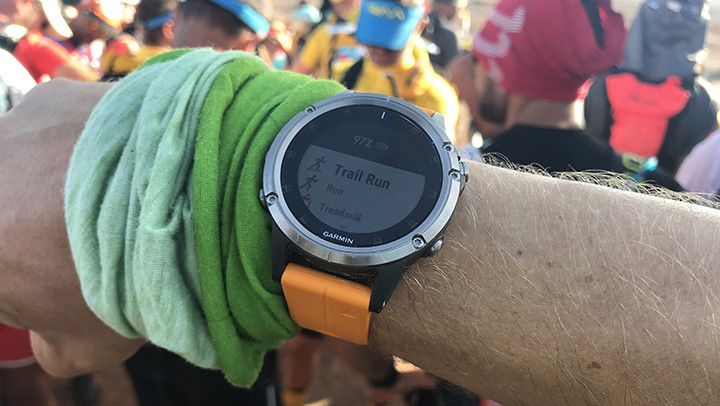
Look for a device that lets you tweak the GPS settings, for example UltraTrac mode on Garmin. The Suunto 9, Garmin Fenix, top-end Forerunner and Polar Vantage V all offer this.
Lots of mountain ultras take in mountains and so a watch that gives you an accurate reading of elevation gain can be useful too. It gives you another number to obsess about in the are-we-nearly-there-yet? game.
- Get an adventure timepiece: The best outdoor watches
Headgear
Whether you prefer a trendy truckers cap, a good old-fashioned beanie or you carry a Buff, having something to keep your noggin protected from the cold or the sun is a good idea. It’s also increasingly part of the ultra look, so if you wanna fit in…
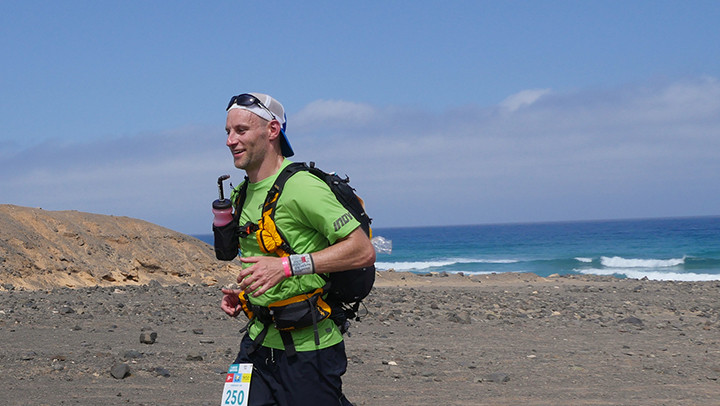
Gloves
It might sound like a small thing but cold hands can wreak havoc with your spirit, not least because frozen fingers – with reduced dexterity – make all kinds of crucial tasks much more difficult, like opening that energy bar. So it’s worth investing in a good pair.
Compression sleeves
Lots of ultra runners use compression sleeves as they’re a great two-for-one in that they help with blood flow, clearing the nasties from your calves quicker. They also provide warmth for your lower limbs without the full restriction of tights or trousers.
Some races that have trousers as obligatory kit items will also accept these as your leg coverings. What’s more you can also shift them to your arms if the conditions dictate that you need to keep your top half warmer than your bottom.


